This article focuses on El Imposible National Park, the most bio-diverse region in El Salvador.
Costa Rica is famous for its abundant wildlife.
But let me tell you a secret. I have seen wildlife in every Central American country I have visited (I have been to all countries in Central America except Nicaragua).
Recently, I had the opportunity to visit the most bio-diverse region of El Salvador. I am referring to El Imposible National Park (Parque Nacional El Imposible). This natural refuge contains 500 species of plants, 100 species of mammals, 53 species of reptiles and amphibians, and 285 species of birds. The park contains interesting species such as ocelots (tigrillo), great curassows (pajuil), black-hawk eagles, toucans, macaws, anteaters, gibnuts, agoutis, and many more.
Additionally, the park is considered a jewel since it is one of the last dry tropical forests in the world. It is also a source of water for the area communities (and other natural reserves) and its scenic beauty provides the opportunity of developing tourist projects.
All these facts may sound surprising. Eco-adventures, wildlife, abundant nature in El Salvador? There are a lot of treasures waiting to be discovered in this fascinating country.
The Peculiar Name
“Imposible” means impossible in Spanish (I guess you knew that). There is a peculiar story explaining the origins of the park’s name.
At the beginning of the 20th century, coffee farmers transported their coffee by mule-train from the farms north of the park to the port of Acajutla, using a trail that traversed the Hacienda El Imposible.
At El Imposible Pass, there was a steep and narrow gorge between two mountains that impeded their route: there, the mule drivers constructed precarious bridges that on several occasions did not support their weight and collapsed, carrying beasts and men down the precipice.
With time, farmers utilized all kinds of tricks to ease the gorge’s passing. Some made all kinds of noises to announce their crossings. Others started to blindfold the animals in order to calm them down. The efforts didn’t help much to ensure the safety of the pass.
In 1968, the government constructed a bridge at El Imposible Pass, opening up transportation from Tacuba to Cara Sucia. To celebrate the event, they left a plaque which says, “Since 1968, it is no longer impossible.”
The Hikes
There are three main hikes in the park.
- Los Enganches – This route takes you to an area where two rivers meet. There is an opportunity to swim in big pockets of water. Two viewpoints (miradores) affording views of the southeastern part of the park are passed during the hike.
- Piedra Sellada – The trails end on a swimming hole. However, the main reason to do the walk is the opportunity to take a look at a stone etched with Maya writings (experts suppose it is Mayan).
- Cerro El Leon – This is the toughest hike in the park. It is basically an ascension to one of the park’s highest peak.
Even though many information sites only refer to these three main hikes, you don’t have to restrict yourself to the full circuits. For example, on day 1 we chose Los Enganches route but only made it to the two viewpoints and returned (because we started late and didn’t have a lot of daylight left).
On the second day, the group divided. Three of us decided to do the Cerro El Leon hike but asked the guide to extend the walking time a bit longer because we didn’t want to return by the same path. The other part of the group (with kids) walked only 1 km of the Cerro El Leon trail to the Ixcanal River. They jumped into the river and came back to camp.
Therefore, discuss with your guide your options. There is a hike perfect for your adventure level.
Talking About Guides
You cannot hike in El Imposible National Park without a guide. Wait, don’t get bummed because of this fact. The guides are residents of the community adjacent to the park (San Benito). They have been trained to provide information about all the aspects of the park.
Believe me, they know every nitty-gritty detail about the area. The ranger at the entrance of the park will put you in contact with one of the guides. They charge $10 for a group of up to 10.
I really like the model used in the area to compromise the community with the park. The park is a source of income for the residents. Therefore, they protect it.
The guides only speak Spanish. You will need to make good use of your Spanish skills, hike without a lot of talking or bring a translator (which surprisingly, many visitors do).
Los Enganche or Viewpoints Hike
As I mentioned, we did only part of Los Enganches hike. We met with our guide Carlos in the park “headquarters”. In there, we were explained the park rules.
There is a small museum where you can learn about the history of the park, including the origin of the name, and its resources. There are even some stuffed animals used to showcase the variety of species usually found during the hikes. Some of the animals were quite freaky.
As we started to hike, we found out part of the hike was interpretative (there were signs giving information about the flora and the fauna of the area). Carlos gave us a lot of information at each stop.
Here are some of our findings:
We saw a seed called monkey’s comb (peine de mico).
We saw a naked Indian. I am referring to a tree with that name. What were you thinking? The tree is given that name because the bark peels easily.
The forest even has a foreigner. The bamboo grows here but it comes from Asia. This plant is used to avoid soil erosion and to cut high winds.
After seeing the huge food supplies everywhere, I understand why there are so many animals in the park. We saw wild berries.
And pacaya. This is the flower of a palm tree. It is edible and usually prepared by covering it with egg, frying it, and serving it with tomato sauce.
We saw many more edible fruits and vegetables.
We even had the opportunity to have a look at the birth of the Ahuachapio River. Other streams feed the river as it goes down the mountains.
After admiring the wonders of the park, we made it to Mirador El Mulo (El Mulo Viewpoint). This point offers panoramic views of the southeastern part of the park. It was very foggy when we arrived. However, the views were still impressive.
A short walk took us to the second mirador (Madre Cacao).
It was time to go back to the lodge. Our first hike proved to be really interesting.
Cerro El Leon Hike
On the second day at El Imposible National Park, we decided to hike to the top of Cerro El Leon (Lion’s Peak). This is the toughest hike in the park. It is 8 km long (about 5 miles). We asked our guide to extend the hike because we didn’t want to return to the park’s entrance by the same path. We ended hiking 10 km (or 6 miles).
The hike is so tough that some guides prefer not to do it. We witnessed this first hand. During our first hike in the park, we discussed with our group the options for the following day. Only three of us were up to the challenge. The other part of the group was going to do a simple 1 km hike to one of the park’s rivers.
Let me tell you what happened next. The guide offered to take one part of the group to the river. Ja!! Did you think he was going to offer his services for the long walk? He said he was going to call the coordinator and tell her WE wanted him to take one group to the river. He was also going to request another guide for the ones wanting to do the long hike.
My husband and one of our friends were a little bit surprised by the guide’s decision.
I told them: “Hey if this guy is going to get paid the same amount of money for taking us to the river or to the peak, which job do you think he is going to take”.
My husband replied: “You know what? I bet you the coordinator is going to send a woman. She is going to prove who is who in this park”.
Guess what? The next day, a lady was waiting for us at the park’s entrance. She told us she can do the hike in 1.5 hours (it usually takes 4 to 5 hours). We are talking about muddy, slippery, and steep terrain (full of wild animals). Now, that is what I call extreme. Can you tell me again who the weakest gender is?
Anyway, she turned out to be a great guide. She shared her knowledge of the park, discussed her daily life, and patiently waited when I needed to rest.
The hike ended to be full of surprises. I am not going to lie, it was tough. Keep in mind this statement is coming from a person totally out of shape. I made it to the top of the peak but I sweated my way up (literality). I took it slow and stopped to rest several times.
Take into consideration the terrain is highly variable. We started to hike downhill towards the Ixcanal River. The trail was wet and slippery. We were moving towards the lowest points in the park. Once we reached the river, everything started to go uphill. I am saying uphill like in 3 hours of climbing a mountain. On a positive note, you don’t feel the oppressive humidity while walking around since the park is a dry tropical forest.
We walked about 40 minutes over a marshy part covered with rusty leaves. This is where I got one of the biggest surprises of my life. I had my first encounter with a snake in the wild. I get goosebumps just thinking about that particular moment.
Suddenly, I saw a strange pattern in the path. I saw circles in a bed of leaves. I knew it was a snake. I was the last one in the group. I don’t understand how any of us didn’t step over it. I ran to tell my husband I saw a snake. One of our friends went back to try to spot it. He told me I was paranoiac. Then, he saw it.
My husband ran to see it while I stood there almost crying. The guide told them to keep a prudent distance. She went to see it too but couldn’t tell the specie because it was coiled. She just knew it was poisonous. You know, I tried to contain myself but I just wanted to get out of there. I continued walking in shock for 45 minutes. Did I mention I was hiking in Tevas. I am buying hiking boots after the experience.
Even though I was kind of traumatized after the snake encounter (I hate snakes), I can affirm the hike was something special. The thought of being in the heart of the last wild place of a country made me giddy.
We were hoping to see lots of wildlife (coatis, anteaters, agoutis). We didn’t see any of those but were pleased with what we saw.
The flowers at El Imposible National Park were amazing. I saw some of the most amazing orchids I have seen anywhere.
The park was also full of edible fruits and vegetables. No wonder so many animals call this place home.
Well, and let me not forget about the views from the top of Cerro El Leon. From there, we witnessed the vastness of the park. We were even able to see the hotel from the top (its solar panels were glistening).
After reaching the goal, we returned happily to the starting point. We left the guide at the front of her house (guides come from the community). We continued to the hotel where our pre-ordered lunch was waiting. Later, we told the rest of the group about our adventurous hike. The kids were happy because we saw a snake. Go figure. I just know I was thankful for the opportunity to have an experience like this.
Did you know about El Impossible National Park in El Salvador? Let me know in the comments section below.
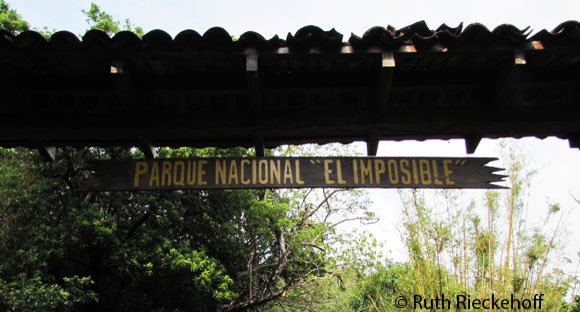
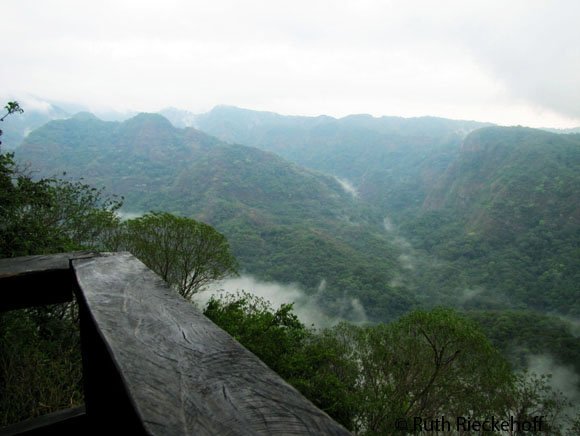








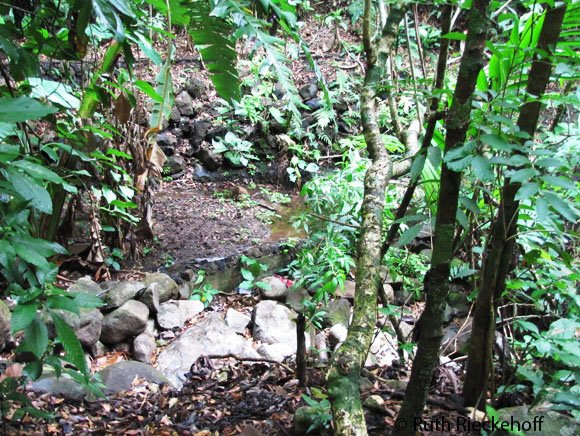
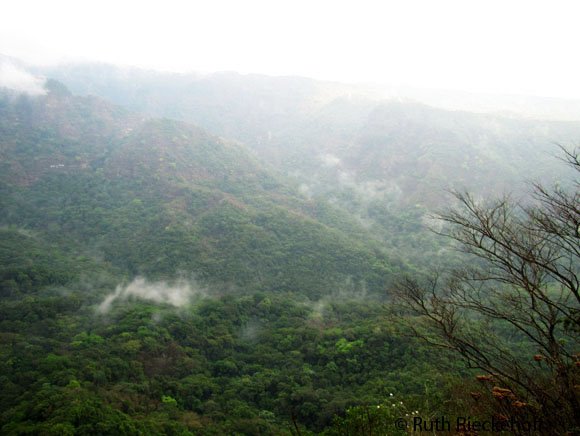


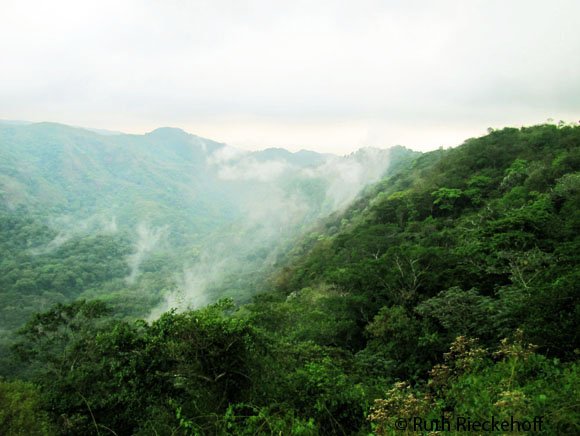
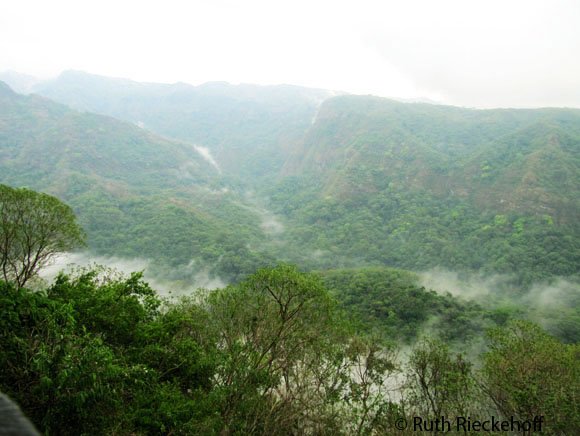



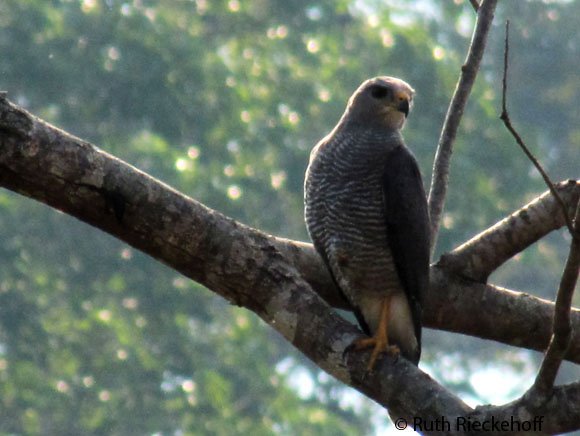
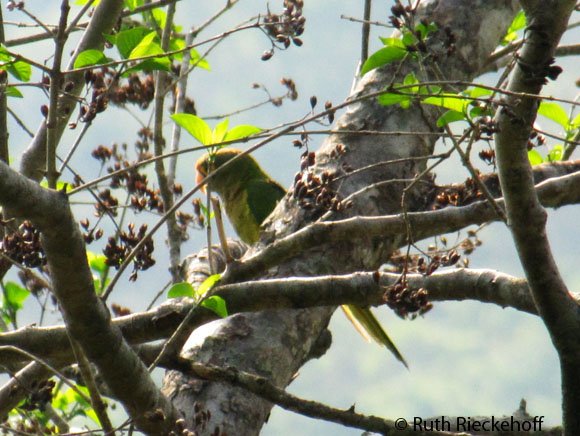

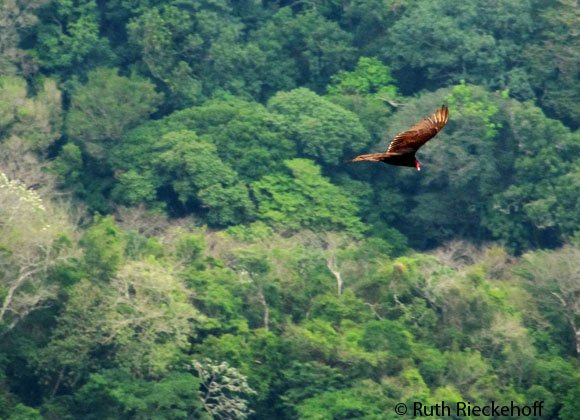



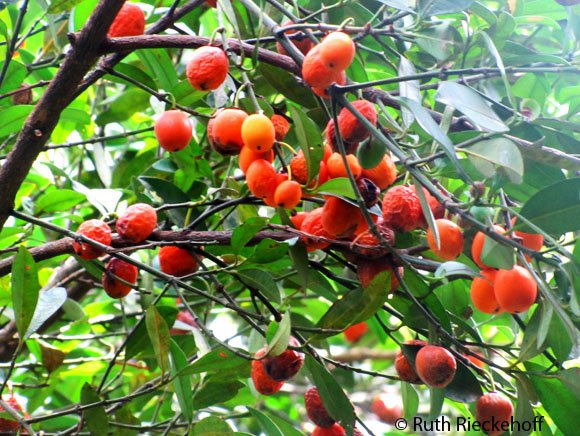
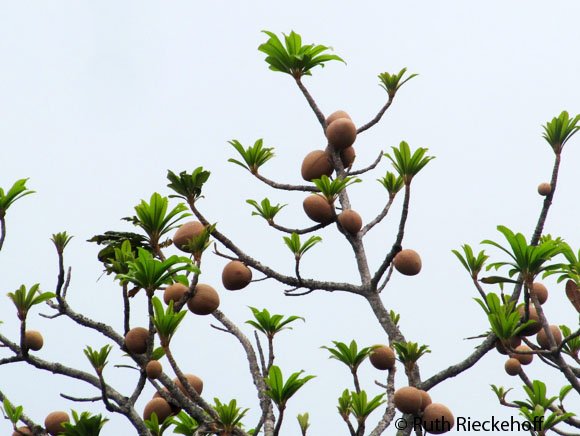
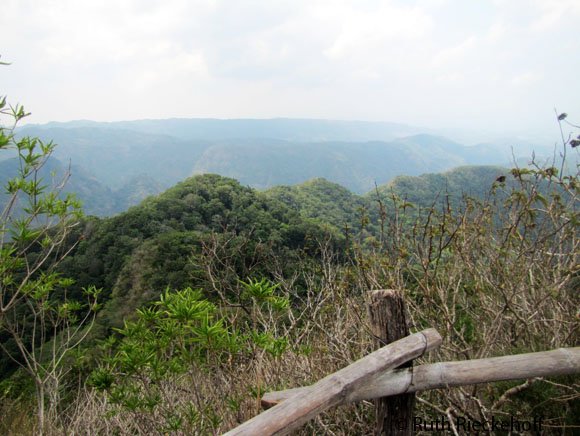
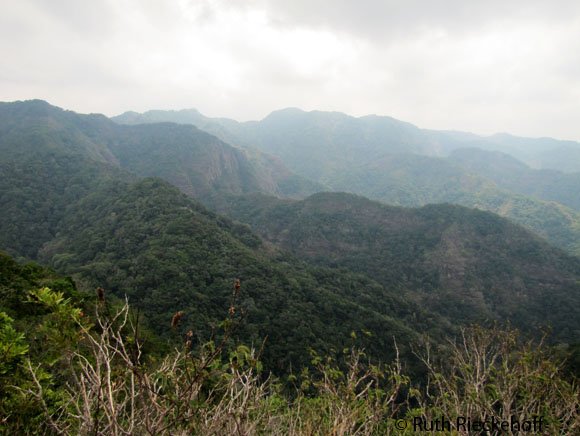


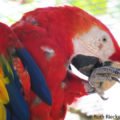


Renee King says
I don’t know what it is about trees that peel….but I love them! lol Thanks for taking me on an educational trip, it’s always good to learn about nature that goes beyond the fact that its beautiful. Naked Indian, huh?
Ruth says
Yes, naked indian. Locals in Central America give trees fascinating names. For example, there is tree called gringo tree. It is red and it peels too. Locals say it looks like gringos who have been too long under the sun.
Brock - Backpack With Brock says
Beautiful! So much amazing scenery
Ruth says
Thanks Brock.
Stephanie - The Travel Chica says
I loved this place! It seems that not many people make the effort to visit, but it’s really great. I can also vouch for the quality of the local guides… good Spanish practice too 🙂
Ruth says
It looks life you visited when in El Salvador. Let me know if you have a post about the place in your blog.
LOPEZM says
Hello, i’m a student at a middle school and i’m doing a website site or a virtual field trip for a school project. I was looking through your website and there are some pictures I want to use for my website. The El Imposible entrance sign picture you took I want to use. Views from the Madre Cacao Viewpoint I also want to use. They are both really nice.
Sam says
Hi, I hope you’re well and thanks for your informative blog. I’m looking to visit this park, however am struggling to find somewhere to stay. Where would you recommend? Thanks, Sam